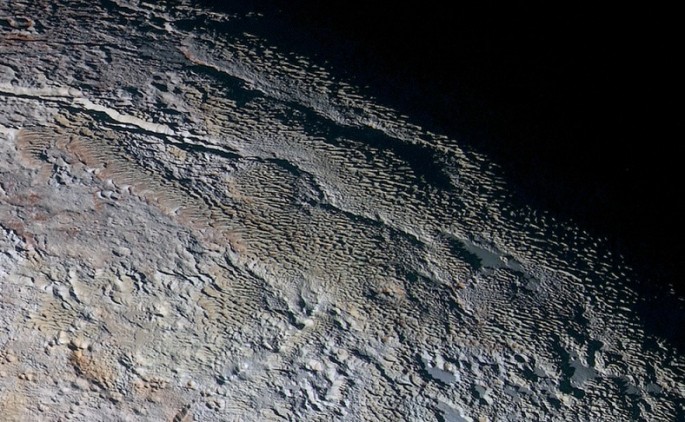NASA's New Horizons probe is now sending data and images of Pluto after its epic flyby in July 14 where mission scientists revealed a spectacular color mosaic of its icy surface with unprecedented views at high resolution.
Images reveal complex features across the surface of the dwarf planet where dark and cratered terrain pockmark the land, transitioning into icy mountain ranges to smooth, frozen plains that makes up the famous "heart" of Pluto or Sputnik Planum.
According to William McKinnon from the New Horizons Geology, Geophysics and Imaging (GGI) team, this unique landscape stretches over hundreds of miles, making it even more perplexing. He adds that this terrain is similar to tree bark or dragon scales than geology. The team finds this challenging to figure out, as this could be a combination of internal tectonic processes including ice sublimation from faint sunlight.
Newest high resolution images show unusual linear ridges spanning for hundreds of miles including deep canyons and smooth plains. Other images reveal structures similar to dunes and shrinking glacial lakes with angular ice mountains and sheer cliffs, according to NASA.
The images also comprise of a near global map with a cylindrical projection which is still in the process of completion. Even so, scientists are now beginning to understand Pluto's complex, stunning surface as this globe view is also zoomable.
According to John Spencer from the New Horizons GGI team, Pluto's surface reveals colors such as subtle pale blues, yellows, oranges and even deep reds to enhance surface features since many landforms possess their own distinct colors, presenting a distinct geological and climatological history.
Methane ice has also been detected on Pluto where the team showed a map of the distribution of this methane ice across the surface including Sputnik Planum which has high concentrations of it and brighter crater rims and ridges as opposed to darker regions.
To date, the New horizons probe will take more than a year and a half to transmit all its data and images from its Pluto flyby across the solar system, from a distance of 3 billion miles.



























